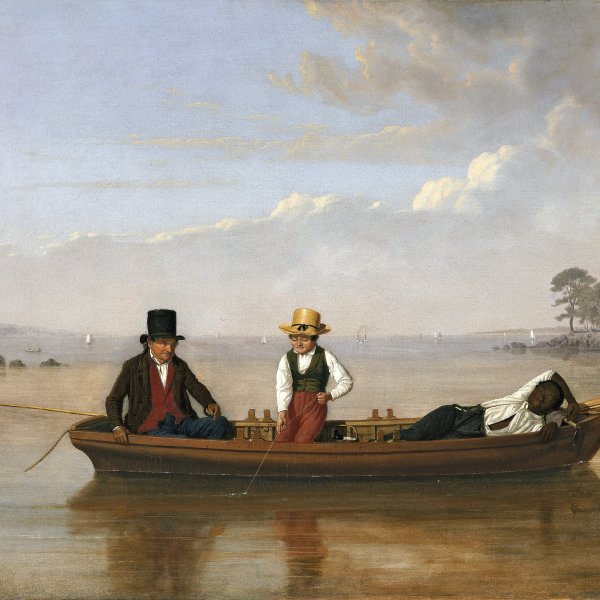James Goodwyn Clonney
Liverpool, 1812-Binghampton, 1867
Although he was probably born in the British city of Liverpool, James Goodwyn Clonney became a representative of the first generation of American genre painters and a chronicler of rural life in the United States in the first half of the nineteenth century.
After arriving in the United States about 1830, Clonney worked as a lithographer for the Mesier firm of New York and for Childs and Inman of Philadelphia. Although it is not known exactly when he took up painting, he won the second prize awarded by the National Academy of Design in 1833 and a year later was elected an associate member. Thenceforward his work was shown in the annual exhibitions organized by the Academy, at the Apollo Association and at the Pennsylvania Academy of the Fine Arts.
Clonney married Margaret Mesier in 1836 and acquired the US nationality in 1840. Shortly afterwards his first genre paintings were shown, portraying American life and customs. During that decade he produced his best works on that line, which were on a par with those of the foremost practitioners in this field:William Sydney Mount and George Caleb Bingham, with whom he displays similarities.
Throughout his lifetime Clonney lived in Peekskill, New Rochelle and (from 1852) Cooperstown, towns in New York state. He died in Binghampton, New York, in 1867.
After arriving in the United States about 1830, Clonney worked as a lithographer for the Mesier firm of New York and for Childs and Inman of Philadelphia. Although it is not known exactly when he took up painting, he won the second prize awarded by the National Academy of Design in 1833 and a year later was elected an associate member. Thenceforward his work was shown in the annual exhibitions organized by the Academy, at the Apollo Association and at the Pennsylvania Academy of the Fine Arts.
Clonney married Margaret Mesier in 1836 and acquired the US nationality in 1840. Shortly afterwards his first genre paintings were shown, portraying American life and customs. During that decade he produced his best works on that line, which were on a par with those of the foremost practitioners in this field:William Sydney Mount and George Caleb Bingham, with whom he displays similarities.
Throughout his lifetime Clonney lived in Peekskill, New Rochelle and (from 1852) Cooperstown, towns in New York state. He died in Binghampton, New York, in 1867.





